
The Botanical Building in Balboa Park, San Diego. The Botanical Building, at 250 feet long by 75 feet wide and 60 feet tall, was the largest wood lath structure in the world when it was built in 1915 for the Panama-California Exposition. The Botanical Building, located on the Prado, west of the Museum of Art, contains about 2,100 permanent tropical plants along with changing seasonal flowers. The Lily Pond, just south of the Botanical Building, is an eloquent example of the use of reflecting pools to enhance architecture. The 193' by 43' foot pond and smaller companion pool were originally referred to as Las Lagunas de las Flores (The Lakes of the Flowers) and were designed as aquatic gardens. The pools contain exotic water lilies and lotus which bloom spring through fall.
Location: Balboa Park, San Diego, California
Image ID: 28826
Panorama dimensions: 5475 x 11746
Location: Balboa Park, San Diego, California
Image ID: 28826
Panorama dimensions: 5475 x 11746
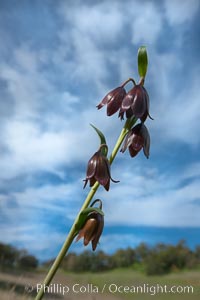
Chocolate lily growing among grasses on oak-covered hillsides. The chocolate lily is a herbaceous perennial monocot that is increasingly difficult to find in the wild due to habitat loss. The flower is a striking brown color akin to the color of chocolate.
Species: Chocolate lily, Fritillaria biflora
Location: Santa Rosa Plateau Ecological Reserve, Murrieta, California
Image ID: 24372
Species: Chocolate lily, Fritillaria biflora
Location: Santa Rosa Plateau Ecological Reserve, Murrieta, California
Image ID: 24372

Chocolate lily growing among grasses on oak-covered hillsides. The chocolate lily is a herbaceous perennial monocot that is increasingly difficult to find in the wild due to habitat loss. The flower is a striking brown color akin to the color of chocolate.
Species: Chocolate lily, Fritillaria biflora
Location: Santa Rosa Plateau Ecological Reserve, Murrieta, California
Image ID: 24377
Species: Chocolate lily, Fritillaria biflora
Location: Santa Rosa Plateau Ecological Reserve, Murrieta, California
Image ID: 24377

The Botanical Building in Balboa Park, San Diego. The Botanical Building, at 250 feet long by 75 feet wide and 60 feet tall, was the largest wood lath structure in the world when it was built in 1915 for the Panama-California Exposition. The Botanical Building, located on the Prado, west of the Museum of Art, contains about 2,100 permanent tropical plants along with changing seasonal flowers. The Lily Pond, just south of the Botanical Building, is an eloquent example of the use of reflecting pools to enhance architecture. The 193 by 43 foot pond and smaller companion pool were originally referred to as Las Lagunas de las Flores (The Lakes of the Flowers) and were designed as aquatic gardens. The pools contain exotic water lilies and lotus which bloom spring through fall. Balboa Park, San Diego.
Location: Balboa Park, San Diego, California
Image ID: 14578
Location: Balboa Park, San Diego, California
Image ID: 14578
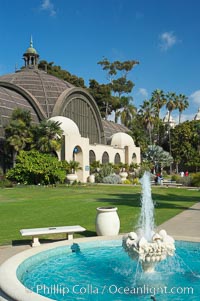
The Botanical Building in Balboa Park, San Diego. The Botanical Building, at 250 feet long by 75 feet wide and 60 feet tall, was the largest wood lath structure in the world when it was built in 1915 for the Panama-California Exposition. The Botanical Building, located on the Prado, west of the Museum of Art, contains about 2,100 permanent tropical plants along with changing seasonal flowers. The Lily Pond, just south of the Botanical Building, is an eloquent example of the use of reflecting pools to enhance architecture. The 193 by 43 foot pond and smaller companion pool were originally referred to as Las Lagunas de las Flores (The Lakes of the Flowers) and were designed as aquatic gardens. The pools contain exotic water lilies and lotus which bloom spring through fall. Balboa Park, San Diego.
Location: Balboa Park, San Diego, California
Image ID: 14582
Location: Balboa Park, San Diego, California
Image ID: 14582
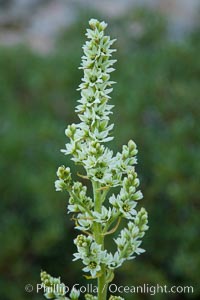
Corn lily blooms near Vogelsang Lake, in shade at sunrise.
Species: California false hellebore, Corn lily, Veratrum californicum
Location: Yosemite National Park, California
Image ID: 25776
Species: California false hellebore, Corn lily, Veratrum californicum
Location: Yosemite National Park, California
Image ID: 25776

The Botanical Building in Balboa Park, San Diego. The Botanical Building, at 250 feet long by 75 feet wide and 60 feet tall, was the largest wood lath structure in the world when it was built in 1915 for the Panama-California Exposition. The Botanical Building, located on the Prado, west of the Museum of Art, contains about 2,100 permanent tropical plants along with changing seasonal flowers. The Lily Pond, just south of the Botanical Building, is an eloquent example of the use of reflecting pools to enhance architecture. The 193 by 43 foot pond and smaller companion pool were originally referred to as Las Lagunas de las Flores (The Lakes of the Flowers) and were designed as aquatic gardens. The pools contain exotic water lilies and lotus which bloom spring through fall.
Location: Balboa Park, San Diego, California
Image ID: 23096
Location: Balboa Park, San Diego, California
Image ID: 23096

Chocolate lily growing among grasses on oak-covered hillsides. The chocolate lily is a herbaceous perennial monocot that is increasingly difficult to find in the wild due to habitat loss. The flower is a striking brown color akin to the color of chocolate.
Species: Chocolate lily, Fritillaria biflora
Location: Santa Rosa Plateau Ecological Reserve, Murrieta, California
Image ID: 24378
Species: Chocolate lily, Fritillaria biflora
Location: Santa Rosa Plateau Ecological Reserve, Murrieta, California
Image ID: 24378

Desert Lily blooms in the sandy soils of the Colorado Desert. It is fragrant and its flowers are similar to cultivated Easter lilies.
Species: Desert lily, Hesperocallis undulata
Location: Anza-Borrego Desert State Park, Borrego Springs, California
Image ID: 10542
Species: Desert lily, Hesperocallis undulata
Location: Anza-Borrego Desert State Park, Borrego Springs, California
Image ID: 10542
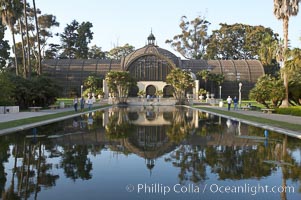
The Botanical Building in Balboa Park, San Diego. The Botanical Building, at 250 feet long by 75 feet wide and 60 feet tall, was the largest wood lath structure in the world when it was built in 1915 for the Panama-California Exposition. The Botanical Building, located on the Prado, west of the Museum of Art, contains about 2,100 permanent tropical plants along with changing seasonal flowers. The Lily Pond, just south of the Botanical Building, is an eloquent example of the use of reflecting pools to enhance architecture. The 193 by 43 foot pond and smaller companion pool were originally referred to as Las Lagunas de las Flores (The Lakes of the Flowers) and were designed as aquatic gardens. The pools contain exotic water lilies and lotus which bloom spring through fall. Balboa Park, San Diego.
Location: Balboa Park, San Diego, California
Image ID: 11273
Location: Balboa Park, San Diego, California
Image ID: 11273

The Botanical Building in Balboa Park, San Diego. The Botanical Building, at 250 feet long by 75 feet wide and 60 feet tall, was the largest wood lath structure in the world when it was built in 1915 for the Panama-California Exposition. The Botanical Building, located on the Prado, west of the Museum of Art, contains about 2,100 permanent tropical plants along with changing seasonal flowers. The Lily Pond, just south of the Botanical Building, is an eloquent example of the use of reflecting pools to enhance architecture. The 193 by 43 foot pond and smaller companion pool were originally referred to as Las Lagunas de las Flores (The Lakes of the Flowers) and were designed as aquatic gardens. The pools contain exotic water lilies and lotus which bloom spring through fall. Balboa Park, San Diego.
Location: Balboa Park, San Diego, California
Image ID: 14575
Location: Balboa Park, San Diego, California
Image ID: 14575

The Botanical Building in Balboa Park, San Diego. The Botanical Building, at 250 feet long by 75 feet wide and 60 feet tall, was the largest wood lath structure in the world when it was built in 1915 for the Panama-California Exposition. The Botanical Building, located on the Prado, west of the Museum of Art, contains about 2,100 permanent tropical plants along with changing seasonal flowers. The Lily Pond, just south of the Botanical Building, is an eloquent example of the use of reflecting pools to enhance architecture. The 193 by 43 foot pond and smaller companion pool were originally referred to as Las Lagunas de las Flores (The Lakes of the Flowers) and were designed as aquatic gardens. The pools contain exotic water lilies and lotus which bloom spring through fall. Balboa Park, San Diego.
Location: Balboa Park, San Diego, California
Image ID: 14576
Location: Balboa Park, San Diego, California
Image ID: 14576
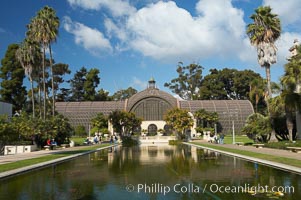
The Botanical Building in Balboa Park, San Diego. The Botanical Building, at 250 feet long by 75 feet wide and 60 feet tall, was the largest wood lath structure in the world when it was built in 1915 for the Panama-California Exposition. The Botanical Building, located on the Prado, west of the Museum of Art, contains about 2,100 permanent tropical plants along with changing seasonal flowers. The Lily Pond, just south of the Botanical Building, is an eloquent example of the use of reflecting pools to enhance architecture. The 193 by 43 foot pond and smaller companion pool were originally referred to as Las Lagunas de las Flores (The Lakes of the Flowers) and were designed as aquatic gardens. The pools contain exotic water lilies and lotus which bloom spring through fall. Balboa Park, San Diego.
Location: Balboa Park, San Diego, California
Image ID: 14577
Location: Balboa Park, San Diego, California
Image ID: 14577

The Botanical Building in Balboa Park, San Diego. The Botanical Building, at 250 feet long by 75 feet wide and 60 feet tall, was the largest wood lath structure in the world when it was built in 1915 for the Panama-California Exposition. The Botanical Building, located on the Prado, west of the Museum of Art, contains about 2,100 permanent tropical plants along with changing seasonal flowers. The Lily Pond, just south of the Botanical Building, is an eloquent example of the use of reflecting pools to enhance architecture. The 193 by 43 foot pond and smaller companion pool were originally referred to as Las Lagunas de las Flores (The Lakes of the Flowers) and were designed as aquatic gardens. The pools contain exotic water lilies and lotus which bloom spring through fall. Balboa Park, San Diego.
Location: Balboa Park, San Diego, California
Image ID: 14579
Location: Balboa Park, San Diego, California
Image ID: 14579

The Botanical Building in Balboa Park, San Diego. The Botanical Building, at 250 feet long by 75 feet wide and 60 feet tall, was the largest wood lath structure in the world when it was built in 1915 for the Panama-California Exposition. The Botanical Building, located on the Prado, west of the Museum of Art, contains about 2,100 permanent tropical plants along with changing seasonal flowers. The Lily Pond, just south of the Botanical Building, is an eloquent example of the use of reflecting pools to enhance architecture. The 193 by 43 foot pond and smaller companion pool were originally referred to as Las Lagunas de las Flores (The Lakes of the Flowers) and were designed as aquatic gardens. The pools contain exotic water lilies and lotus which bloom spring through fall. Balboa Park, San Diego.
Location: Balboa Park, San Diego, California
Image ID: 14580
Location: Balboa Park, San Diego, California
Image ID: 14580

The Botanical Building in Balboa Park, San Diego. The Botanical Building, at 250 feet long by 75 feet wide and 60 feet tall, was the largest wood lath structure in the world when it was built in 1915 for the Panama-California Exposition. The Botanical Building, located on the Prado, west of the Museum of Art, contains about 2,100 permanent tropical plants along with changing seasonal flowers. The Lily Pond, just south of the Botanical Building, is an eloquent example of the use of reflecting pools to enhance architecture. The 193 by 43 foot pond and smaller companion pool were originally referred to as Las Lagunas de las Flores (The Lakes of the Flowers) and were designed as aquatic gardens. The pools contain exotic water lilies and lotus which bloom spring through fall. Balboa Park, San Diego.
Location: Balboa Park, San Diego, California
Image ID: 14581
Location: Balboa Park, San Diego, California
Image ID: 14581

The Botanical Building in Balboa Park, San Diego. The Botanical Building, at 250 feet long by 75 feet wide and 60 feet tall, was the largest wood lath structure in the world when it was built in 1915 for the Panama-California Exposition. The Botanical Building, located on the Prado, west of the Museum of Art, contains about 2,100 permanent tropical plants along with changing seasonal flowers. The Lily Pond, just south of the Botanical Building, is an eloquent example of the use of reflecting pools to enhance architecture. The 193 by 43 foot pond and smaller companion pool were originally referred to as Las Lagunas de las Flores (The Lakes of the Flowers) and were designed as aquatic gardens. The pools contain exotic water lilies and lotus which bloom spring through fall. Balboa Park, San Diego.
Location: Balboa Park, San Diego, California
Image ID: 14583
Location: Balboa Park, San Diego, California
Image ID: 14583

The Botanical Building in Balboa Park, San Diego. The Botanical Building, at 250 feet long by 75 feet wide and 60 feet tall, was the largest wood lath structure in the world when it was built in 1915 for the Panama-California Exposition. The Botanical Building, located on the Prado, west of the Museum of Art, contains about 2,100 permanent tropical plants along with changing seasonal flowers. The Lily Pond, just south of the Botanical Building, is an eloquent example of the use of reflecting pools to enhance architecture. The 193 by 43 foot pond and smaller companion pool were originally referred to as Las Lagunas de las Flores (The Lakes of the Flowers) and were designed as aquatic gardens. The pools contain exotic water lilies and lotus which bloom spring through fall. Balboa Park, San Diego.
Location: Balboa Park, San Diego, California
Image ID: 14584
Location: Balboa Park, San Diego, California
Image ID: 14584
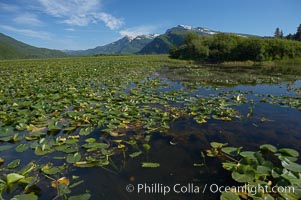
Pond covered with water lilys, near Silver Salmon Creek.
Location: Lake Clark National Park, Alaska
Image ID: 19086
Location: Lake Clark National Park, Alaska
Image ID: 19086

Pond covered with water lilys, near Silver Salmon Creek.
Location: Lake Clark National Park, Alaska
Image ID: 19087
Location: Lake Clark National Park, Alaska
Image ID: 19087

Pond covered with water lilys, near Silver Salmon Creek.
Location: Lake Clark National Park, Alaska
Image ID: 19088
Location: Lake Clark National Park, Alaska
Image ID: 19088

Pond covered with water lilys, near Silver Salmon Creek.
Location: Lake Clark National Park, Alaska
Image ID: 19093
Location: Lake Clark National Park, Alaska
Image ID: 19093
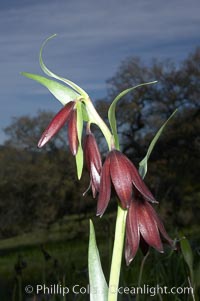
Chocolate lily bloom close-up.
Species: Chocolate lily, Fritillaria biflora
Location: Santa Rosa Plateau Ecological Reserve, Murrieta, California
Image ID: 20528
Species: Chocolate lily, Fritillaria biflora
Location: Santa Rosa Plateau Ecological Reserve, Murrieta, California
Image ID: 20528

Chocolate lily bloom close-up.
Species: Chocolate lily, Fritillaria biflora
Location: Santa Rosa Plateau Ecological Reserve, Murrieta, California
Image ID: 20529
Species: Chocolate lily, Fritillaria biflora
Location: Santa Rosa Plateau Ecological Reserve, Murrieta, California
Image ID: 20529
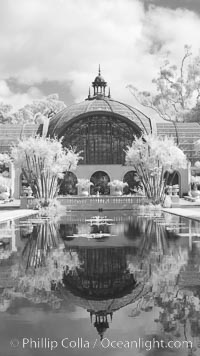
The Botanical Building in Balboa Park, San Diego. The Botanical Building, at 250 feet long by 75 feet wide and 60 feet tall, was the largest wood lath structure in the world when it was built in 1915 for the Panama-California Exposition. The Botanical Building, located on the Prado, west of the Museum of Art, contains about 2,100 permanent tropical plants along with changing seasonal flowers. The Lily Pond, just south of the Botanical Building, is an eloquent example of the use of reflecting pools to enhance architecture. The 193 by 43 foot pond and smaller companion pool were originally referred to as Las Lagunas de las Flores (The Lakes of the Flowers) and were designed as aquatic gardens. The pools contain exotic water lilies and lotus which bloom spring through fall.
Location: Balboa Park, San Diego, California
Image ID: 23098
Location: Balboa Park, San Diego, California
Image ID: 23098

Tinken Museum of Art, reflected in lily pond, infrared.
Location: Balboa Park, San Diego, California
Image ID: 23100
Location: Balboa Park, San Diego, California
Image ID: 23100
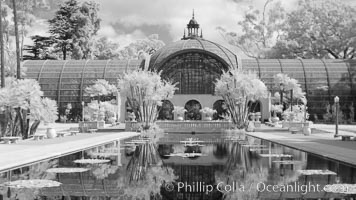
The Botanical Building in Balboa Park, San Diego. The Botanical Building, at 250 feet long by 75 feet wide and 60 feet tall, was the largest wood lath structure in the world when it was built in 1915 for the Panama-California Exposition. The Botanical Building, located on the Prado, west of the Museum of Art, contains about 2,100 permanent tropical plants along with changing seasonal flowers. The Lily Pond, just south of the Botanical Building, is an eloquent example of the use of reflecting pools to enhance architecture. The 193 by 43 foot pond and smaller companion pool were originally referred to as Las Lagunas de las Flores (The Lakes of the Flowers) and were designed as aquatic gardens. The pools contain exotic water lilies and lotus which bloom spring through fall.
Location: Balboa Park, San Diego, California
Image ID: 23103
Location: Balboa Park, San Diego, California
Image ID: 23103

Lilypads cover Heron Pond, Mount Moran in the background.
Location: Heron Pond, Grand Teton National Park, Wyoming
Image ID: 07425
Location: Heron Pond, Grand Teton National Park, Wyoming
Image ID: 07425
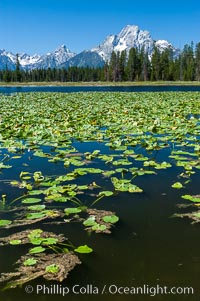
Lilypads cover Heron Pond, Mount Moran in the background.
Location: Heron Pond, Grand Teton National Park, Wyoming
Image ID: 07426
Location: Heron Pond, Grand Teton National Park, Wyoming
Image ID: 07426

Lilypads cover Heron Pond, Mount Moran in the background.
Location: Heron Pond, Grand Teton National Park, Wyoming
Image ID: 07427
Location: Heron Pond, Grand Teton National Park, Wyoming
Image ID: 07427